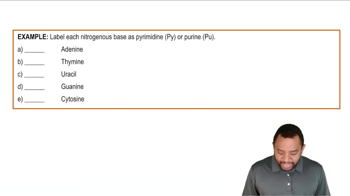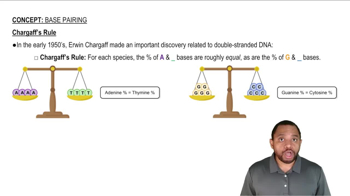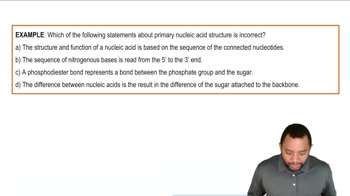Multiple Choice
The four nitrogenous bases commonly found in DNA are:
621
views
 Verified step by step guidance
Verified step by step guidance Verified video answer for a similar problem:
Verified video answer for a similar problem:



 1:49m
1:49mMaster Nitrogenous Bases Concept 1 with a bite sized video explanation from Jules
Start learning